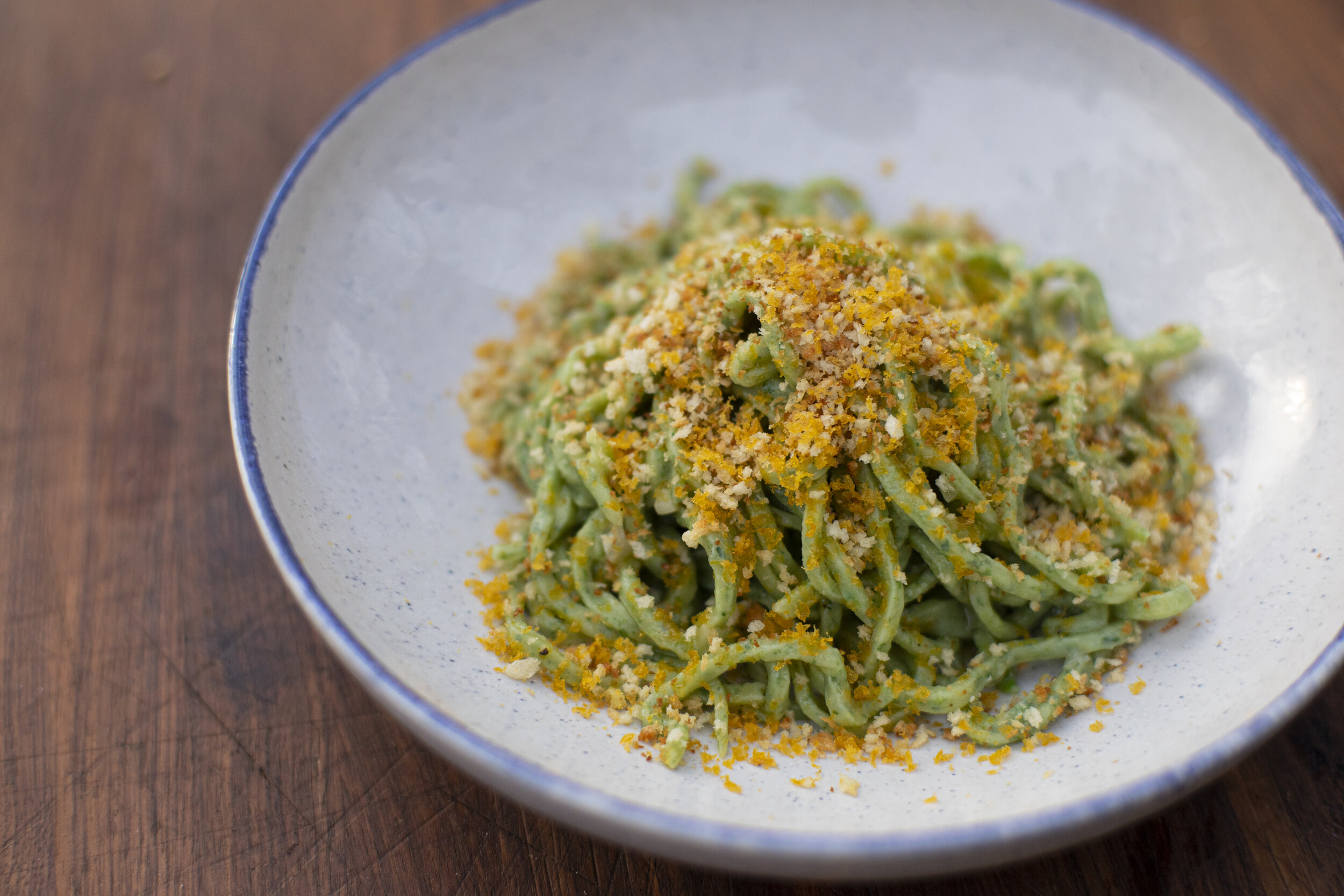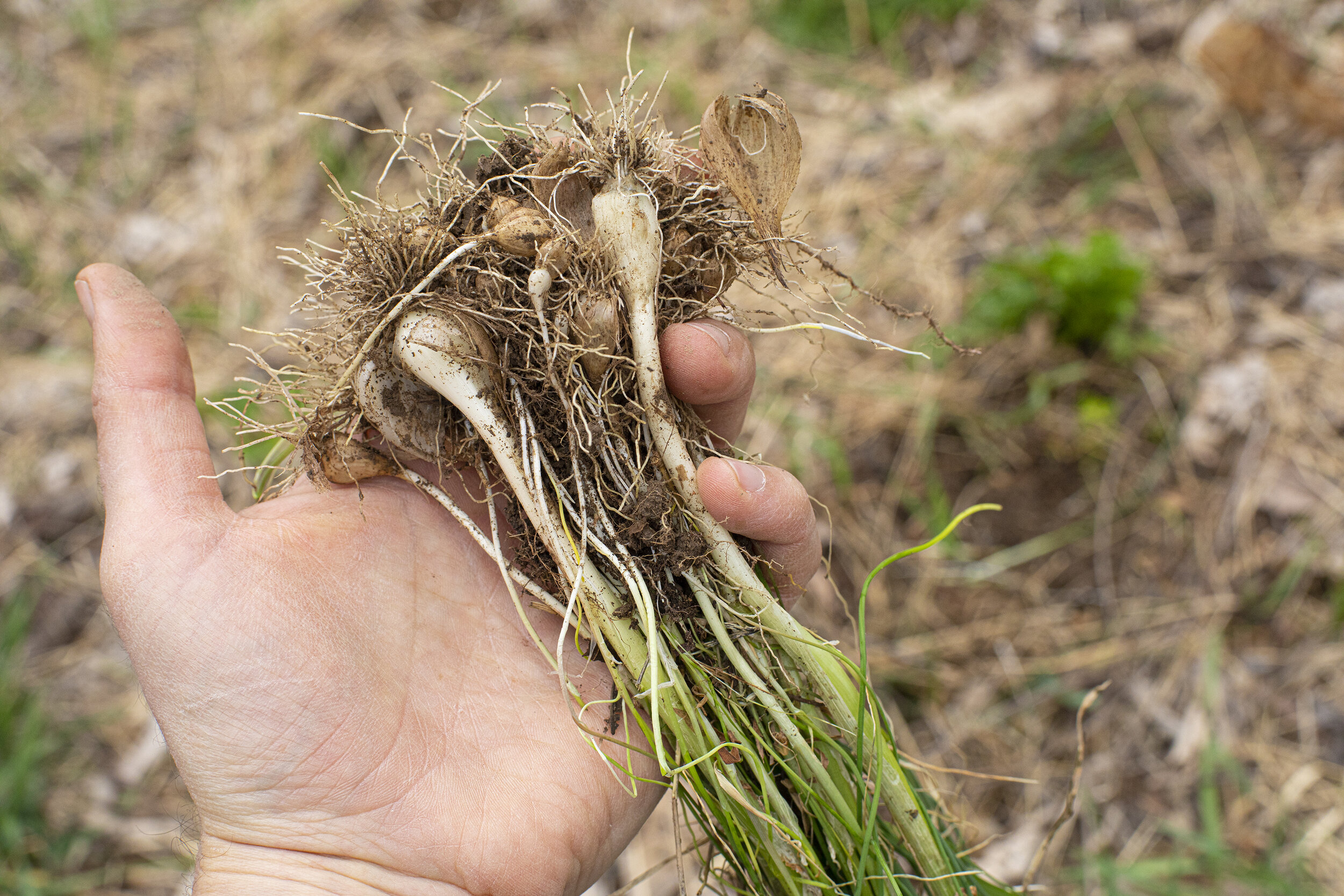Nettle Spaghetti alla Chitarra con Bottarga
I’ve been patiently waiting for the stinging nettle to be just the right size, thinking about all the details of this dish throughout the winter. In the end it’s all about simplicity and timing- a bright nettle pasta balanced by the umami of the mullet botarga. A creamy sauce that blends together shaved bottarga, spring allium infused olive oil, with a touch of pasta water thrown together with crunchy toasted breadcrumbs. This was one of the top pasta dishes in recent memory for me. The Sicilian rimancinata is from @molini_del_ponte_drago which I sourced from @gustiamo along with the bottarga. The pantry just got a major upgrade. Video of the whole process below.
The Pasta Dough
Ingredients
400 g semola rimacinata cuore (or similar)
3 eggs
100 g blanched stinging nettle, pressed to remove most water
Directions
Using tongs, drop your stinging nettle into a pot of boiling water for 1 minute. Blanching will immediately nullify the stinging power of the nettle and you’ll then be able to handle it without concern. *One thing I’d change in retrospect would be to remove the thicker stems and just use the most tender tips of the plant. I didn’t take care to remove the larger stems and the fibers became slightly problematic at a later stage when it’s time to cut the pasta.
Transfer the nettle to an ice bath which will lock in the beautiful color.
Remove after a few minutes and squeeze out excess water. Set aside. You can freeze whatever is extra.
Using a food processor, blend together the nettle and eggs until it is a frothy green liquid.
On a clean work surface make a mound of flour and create a well in the center.
Pour the nettle/egg mixture and begin combining together with a fork or bench knife and then use your hands. This flour is a bit more course than all purpose or 00, so it might seem a bit crumbly at first. But keep working it, as you would with other flour, and it all comes together nicely. If it feels too dry, add a little cold water as necessary. Work the dough methodically for about ten minutes until you have a smooth, homogeneous ball.
Wrap in plastic wrap and refrigerate for 30 mins.
Unwrap the dough and divide into two. Wrap the portion that is on standby.
Gently dust your work surface and begin rolling out the dough with a rolling pin (mattarello). If you prefer to use a pasta roller for this, that will work also. Work methodically, going from the center outwards to the edges, creating a large round sheet (sfoglia). Sprinkle with more flour if the dough seems to be sticking to any surface. Roll it out to about 2mm thickness, flipping the pasta sheet over a few times to work from both sides. Allow the sfoglia to air dry for a few minutes while you prepare your chitarra.
I’m using a chitarra which is a beautiful pasta making tool I recently purchased. You can use any pasta maker with a spaghetti attachment if you don’t own a chitarra. The resulting noodle is square shaped and a bit thicker than traditional spaghetti - very similar to tonnarelli. Call it what you want, it is delicious.
Cut sections of the sfoglia so that they fit precisely onto the chitarra strings. Gently use the rolling pin to apply pressure downwards, gradually pressing the pasta through the strings. Remove, dust with some semolina, and repeat until all of your dough is finished. Cover with a towel until ready to cook or into the refrigerator if saving for the next day.
The Pasta con Bottarga
Ingredients
Mullet or tuna bottarga
Extra virgin olive oil
Finely diced garlic (or in this case wild spring alliums)
Breadcrumbs (approx 1/2 cup)
Salt / Pepper
Directions
Add about 1/4 cup of good olive oil to a pan and bring to medium heat.
Saute the garlic/alliums for a few minutes until translucent.
Remove from the heat and pour into a small bowl to cool off.
Meanwhile, in the same pan you used for the garlic, toast about 1/2 cup of breadcrumbs until golden brown.
Shave a few teaspoons of bottarga directly into the oil and stir to infuse all the flavors. Adjust the amount of bottarga depending on how "powerful you want that flavor to be. Set aside.
Bring a large pot of water to boil and season with salt.
Cook the pasta for about 3 minutes and drain - making sure to reserve about a cup of the pasta water.
Toss the pasta with oil/bottarga mixture, and adjust with the reserved pasta water.
Plate each serving and top with more grated bottarga and a generous sprinkle of breadcrumbs which are essential to cap off the dish.
Enjoy.














